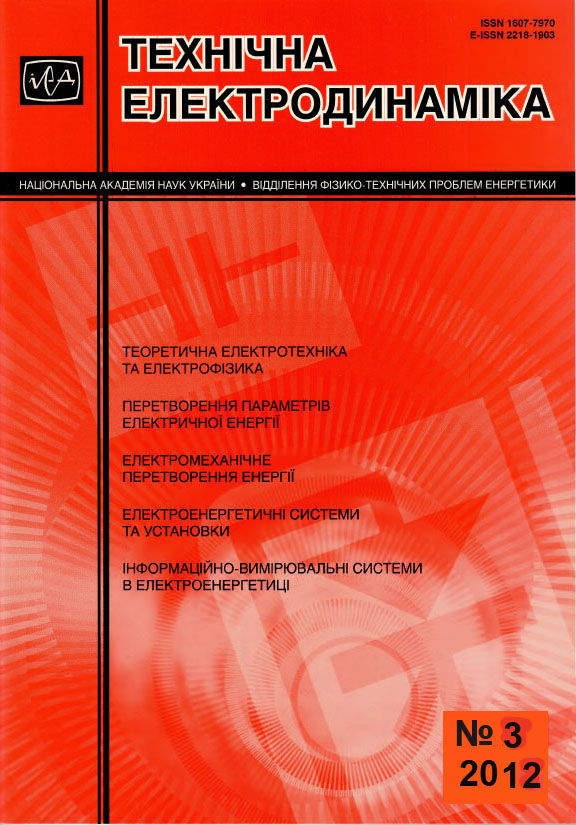Abstract
Research problem to create a real time quasi-optimal system on the basis of built in microcontrollers is formulated. In the heart of such system lies the identification of a subsystem called ‘the pulse converter - the unknown (including - nonlinear) load' by the means of an artificial neural network. This subsystem functions under conditions of changing limitations on the impact levels and in the presence of disturbances. The modified algorithm of optimal regulation is suggested. It allows putting the regulation time in its dependence on the size of the initial mismatch without any numerical solving of the transcendental equation and therefore increasing the speed of the system while fulfilling smaller tasks (for example, a task of parameter tracking). References 7.
References
Voitenko V.P. Quasi-optimal regulation in the industrial system with the pulse key // Tekhnichna elektrodynamika. Tematychnyi vypusk "Sylova elektronika ta enerhoefektyvnist". - 2011. - Vol. 2. - Pp. 171-175. (Rus)
Voitenko V.P. Quasi-optimal industrial regulators with automatic parametric identification // Tekhnichna elektrodynamika. Tematychnyi vypusk "Sylova elektronika ta enerhoefektyvnist". - 2004. - Vol. 3. - Pp. 85 - 90. (Rus)
Voitenko V.P., Khomenko M.A., Rudich P.V. Application of artificial neural networks for the identification of industrial control objects // Visnyk ChDTU. - 2011. — № 1 (47). - Pp. 196 - 201 (Ukr)
Leonov A P. To a problem of synthesis of the quasi-optimal on speed digital control for the object positioning // the Preprint IPHE 99-1. Protvino, 1999. -11 p. (Rus)
Hagan M.T., De Jesus O., Schultz R. Training recurrent networks for filtering and control // in: Recurrent Neural Networks: Design and Applications, L. Medsker and L.C. Jain. - Eds., CRC Press. Pp. 311-340.
Hagan M.T., Demuth H.B. Neural networks for control // Proc. American Control Conference, San Diego, CA. - 1999. - Pp. 1642-1656.
Ljung L. Some aspects on nonlinear system identification // 14th IFAC Symposium on System Identification. 2006. - Vol. 14, Part 1.

This work is licensed under a Creative Commons Attribution-NonCommercial-NoDerivatives 4.0 International License.
Copyright (c) 2023 Tekhnichna Elektrodynamika

